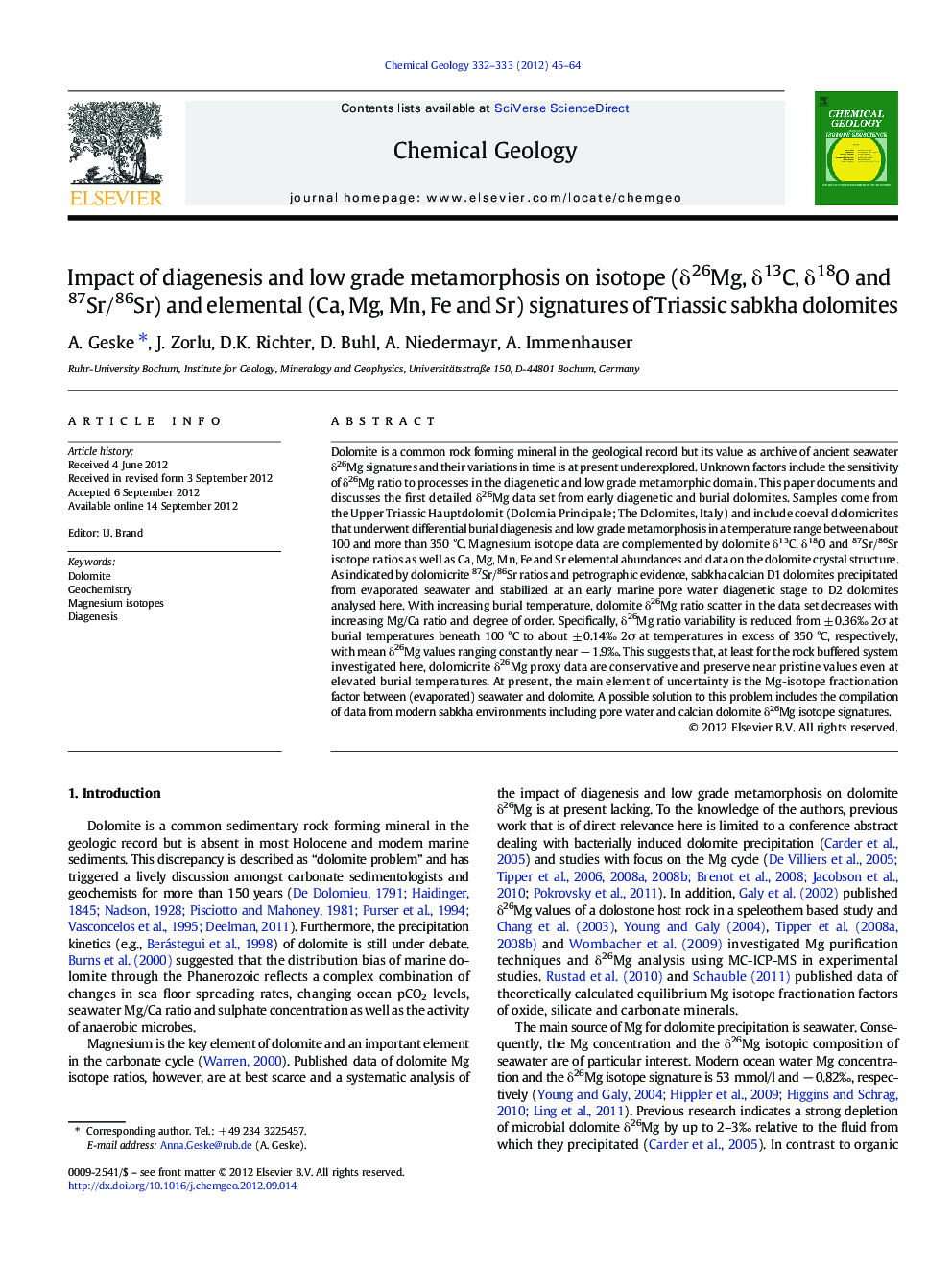| کد مقاله | کد نشریه | سال انتشار | مقاله انگلیسی | نسخه تمام متن |
|---|---|---|---|---|
| 4699218 | 1637634 | 2012 | 20 صفحه PDF | دانلود رایگان |

Dolomite is a common rock forming mineral in the geological record but its value as archive of ancient seawater δ26Mg signatures and their variations in time is at present underexplored. Unknown factors include the sensitivity of δ26Mg ratio to processes in the diagenetic and low grade metamorphic domain. This paper documents and discusses the first detailed δ26Mg data set from early diagenetic and burial dolomites. Samples come from the Upper Triassic Hauptdolomit (Dolomia Principale; The Dolomites, Italy) and include coeval dolomicrites that underwent differential burial diagenesis and low grade metamorphosis in a temperature range between about 100 and more than 350 °C. Magnesium isotope data are complemented by dolomite δ13C, δ18O and 87Sr/86Sr isotope ratios as well as Ca, Mg, Mn, Fe and Sr elemental abundances and data on the dolomite crystal structure. As indicated by dolomicrite 87Sr/86Sr ratios and petrographic evidence, sabkha calcian D1 dolomites precipitated from evaporated seawater and stabilized at an early marine pore water diagenetic stage to D2 dolomites analysed here. With increasing burial temperature, dolomite δ26Mg ratio scatter in the data set decreases with increasing Mg/Ca ratio and degree of order. Specifically, δ26Mg ratio variability is reduced from ± 0.36‰ 2σ at burial temperatures beneath 100 °C to about ± 0.14‰ 2σ at temperatures in excess of 350 °C, respectively, with mean δ26Mg values ranging constantly near − 1.9‰. This suggests that, at least for the rock buffered system investigated here, dolomicrite δ26Mg proxy data are conservative and preserve near pristine values even at elevated burial temperatures. At present, the main element of uncertainty is the Mg-isotope fractionation factor between (evaporated) seawater and dolomite. A possible solution to this problem includes the compilation of data from modern sabkha environments including pore water and calcian dolomite δ26Mg isotope signatures.
► Hauptolomite (Triassic) sabkha dolomites represent very early diagenetic phase.
► First in-depth study dealing with the impact of diagenesis in dolomite δ26Mg ratios.
► Magnesium isotope signature is homogenized with increasing stoichiometry.
Journal: Chemical Geology - Volumes 332–333, 25 November 2012, Pages 45–64